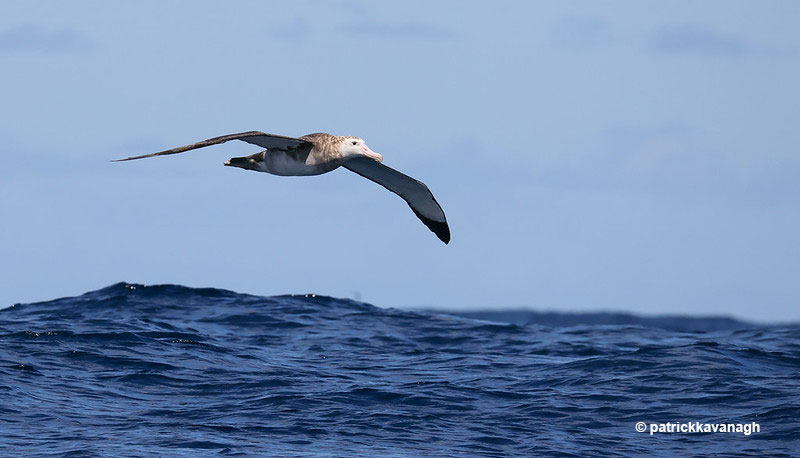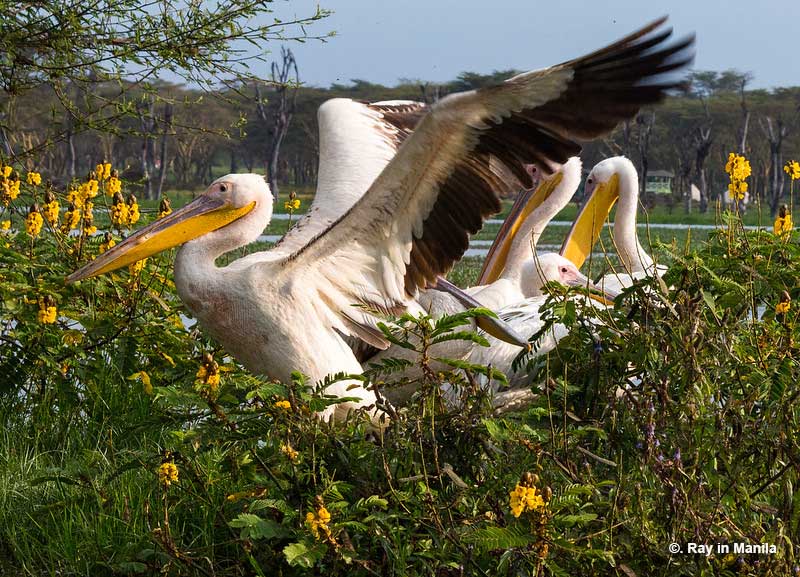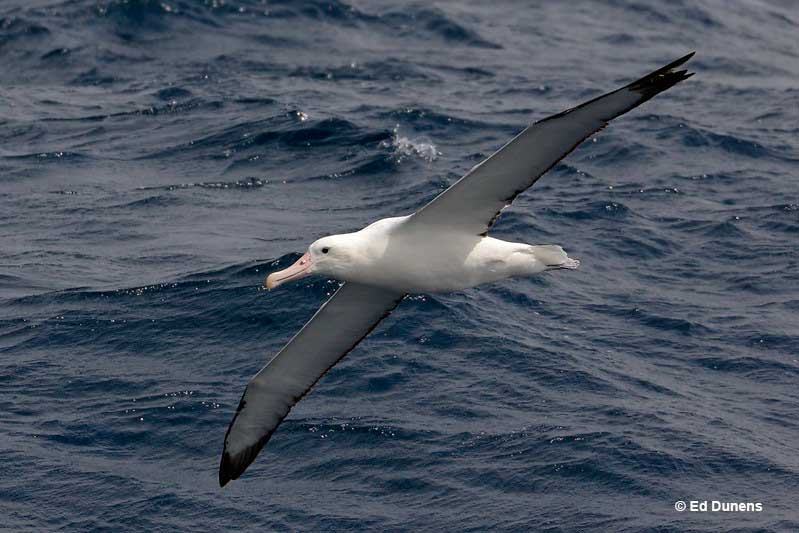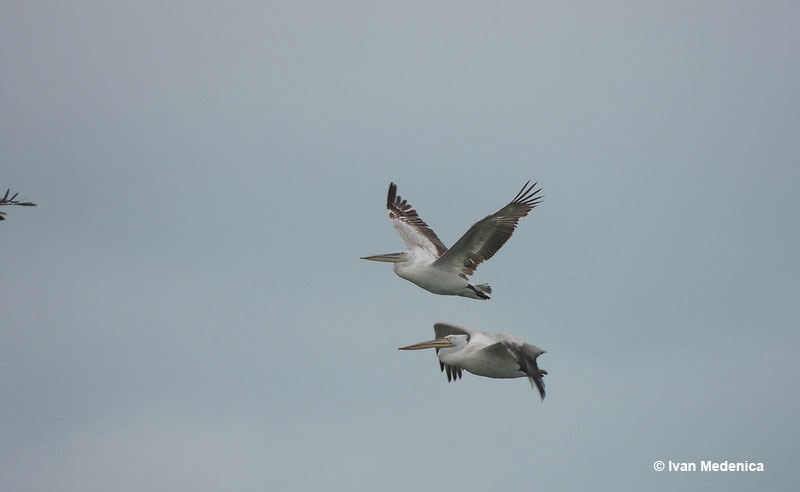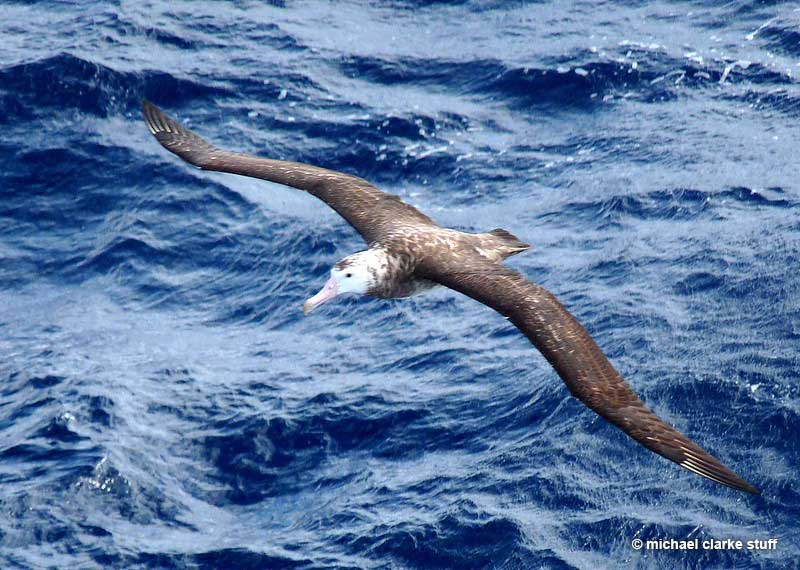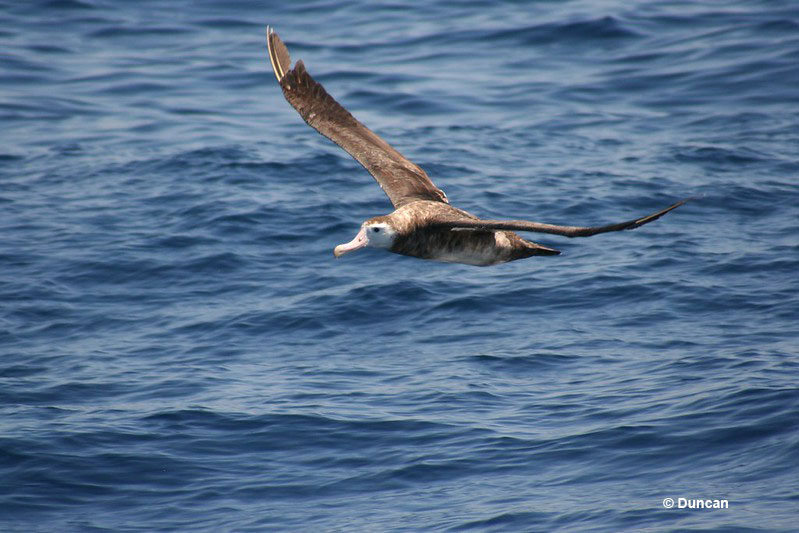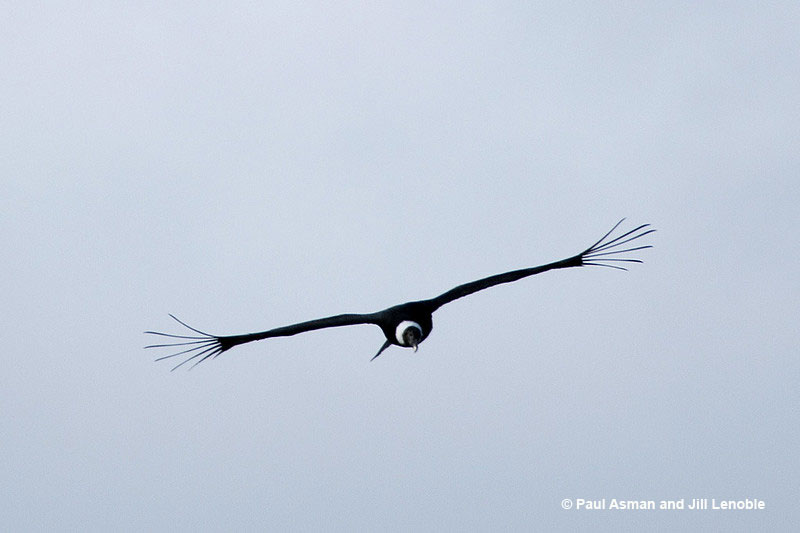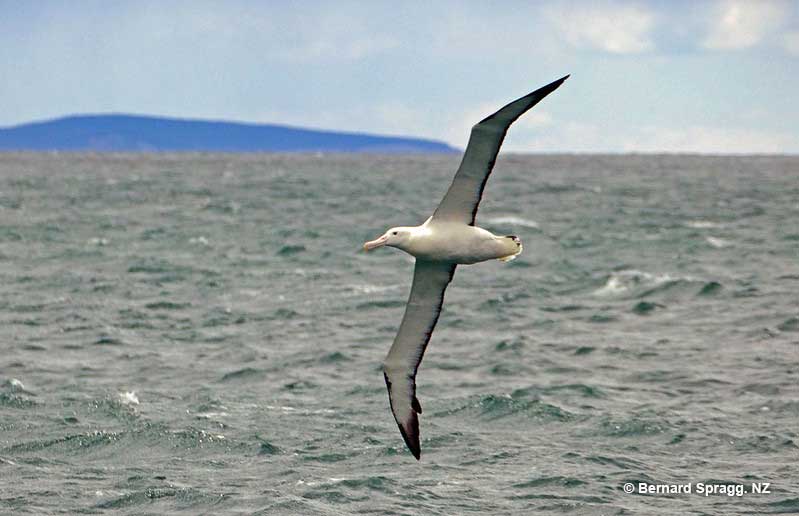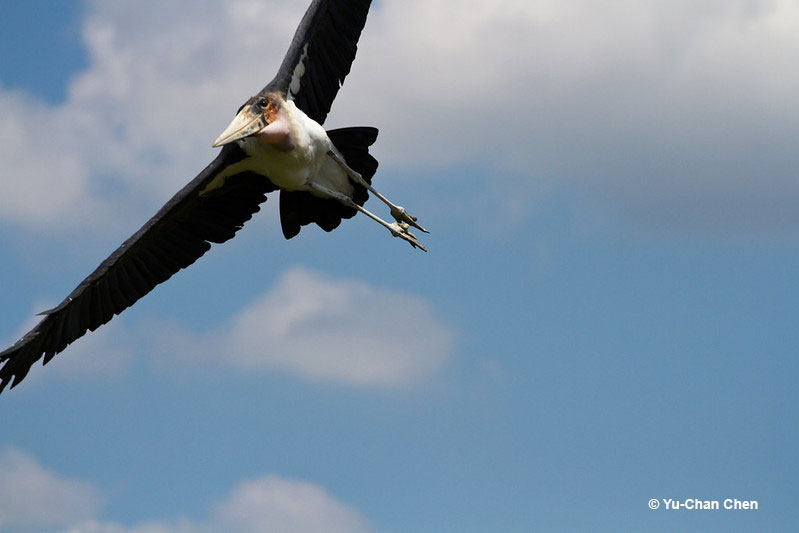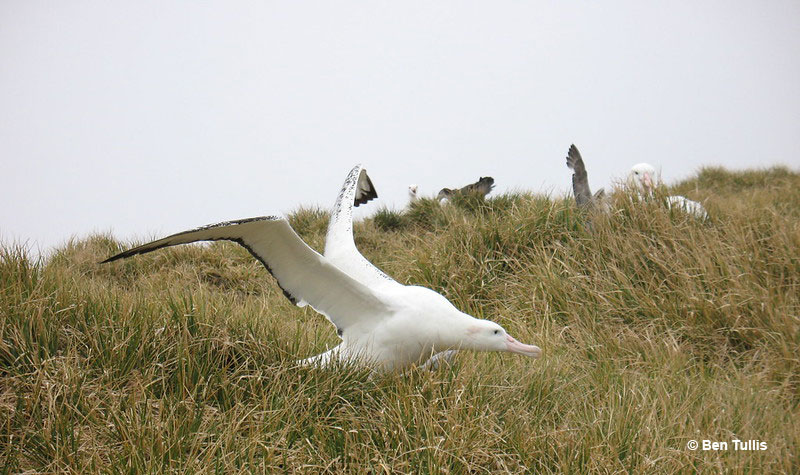
Birds come in all sizes, but some are truly massive. Watch a soaring eagle and it can almost look like a small airplane!
Bald Eagles are huge, but incredibly, there are even bigger flying birds out there! It’s hard to believe, but yes, some birds are quite a bit larger.
Which mega birds are those? Where do they live? See this article to learn all about the 10 largest flying birds in the world.
Largest Flying Birds In The World
Wandering Albatross
Wingspan: 12.1 feet
Weight: 26.25 lbs
The Wandering Albatross is a huge seabird with a big pale pinkish beak. Adults are white with pale mottled gray on their backs and a small pale buff patch on the back of their head. They also have extremely long, pointed wings that are mostly white below with black flight feathers. The top side of their wings are mottled black and white.
Related: Bird Facts & Statistics That Will Blow Your Mind
Depending on their age, young birds have more black on their wings, or are brown with a white patch on their face.
This species roams across large areas of the southern oceans in search of squid, fish, krill, and other bits of food. They can range north to Brazil, South Africa, and Australia, and rarely flap while soaring and gliding for long distances.
The Wandering Albatross breeds once every two years on several windswept islands in the cold southern oceans. It spends most of its life on the wing, roaming over rough marine waters. With a wingspan of 12.1 feet, they are the largest flying bird in the world.
Great White Pelican
Wingspan: 11.8 feet
Weight: 25.2 lbs
The Great White Pelican is a big white bird with black flight feathers, and a bit of blond wash on its throat. Like other pelican species, it has a long beak with a large pouch made of bare skin, a short tail, and big webbed feet.
This species also has deep orange-yellow coloration on its pouch and face, and some gray and reddish on its beak. Young birds are duller and have pale brown on their wings. Both sexes look the same except that females are usually a bit smaller, and have brighter colors on their beak.
Great White Pelicans occur in large flocks on shallow freshwater and brackish waters. They use shallow wetlands at scattered sites in parts of southeastern Europe, central and southern Asia, and many areas in eastern and sub-Saharan Africa. Our American White Pelicans and Brown Pelicans can not beat this birds whopping 11.8 ft wingspan.
Flocks of Great White Pelicans herd carp, mullet, and other fish into shallow waters where they can scoop them up with their big beaks.
Southern Royal Albatross
Wingspan: 11.51 feet
Weight: 19 lbs
The Southern Royal Albatross is a huge white seabird with a longish, hefty, pale pink beak. It shows a narrow black line on the cutting edge of its bill, and has black flight feathers on its very long pointed wings.
It also shows a bit of black on the leading edge of its underwing, and has mottled black on its upperwings. The amount of black on its upperwings is related to its age, with young birds having more black.
Southern Royal Albatrosses use their long wings to glide and soar long distances over parts of the southern oceans. To fly, they require very windy and rough oceans.
This albatross forages for squid, small fish, and other bits of marine food it finds on the surface of the water. It only breeds on some small islands near New Zealand but can range north to Chile and Brazil.
Dalmatian Pelican
Wingspan: 11.51 feet
Weight: 25 lbs
The Dalmatian Pelican is a big white bird with gray and black flight feathers, curled feathers on its head, and ruffled feathers on its neck. It also has some blond coloration on its throat, and a red-orange patch of bare skin around its pale eyes.
This species has a long, dark grayish beak with a big, reddish pouch. They also have short broad tails, and big gray, webbed feet.
Both sexes of the Dalmatian Pelican look alike, although females are smaller. In winter, this species is much duller and has a paler, more yellowish beak.
Dalmatian Pelicans occur in small flocks on rivers, lakes, and other shallow wetlands. They forage for carp, perch, and other species by quickly scooping up fish while floating on the water.
This species spends the summer in parts of southeastern Europe and central Asia, and winters in parts of southeastern Europe, the Middle East, northern India, and eastern China.
Tristan Albatross
Wingspan: 11.48 feet
Weight: 25.8 lbs
The Tristan Albatross is a huge white seabird with a big pinkish beak. Adults are white with some mottled black markings on their upperwings, and black flight feathers.
They have very long, pointed wings, webbed feet, and a short tail. Both sexes of this species look similar but young birds have more black on their upperwings, and can be mostly brown with a white face.
The Tristan Albatross is one of the rarest of seabirds. There may be just 7,000 left and most only breed on Gough Island in the southern Atlantic. When not breeding, Tristan Albatrosses wander in the southern Atlantic and Indian Oceans.
Related: Bird names starting with A
They can occur from Brazil to southern Africa and western Australia, and forage for fish, krill, and other bits of food found on the surface of the water. Like other large albatrosses, this species also requires very windy and wavey conditions to glide over long distances.
Amsterdam Albatross

Image credit: animalia.bio
Wingspan: 11.15 feet
Weight: 25.8 lbs
The Amsterdam Albatross is a big, chocolate-brown seabird with a white belly, white face, and mottled brown and white neck and flanks. This species also has a big pinkish beak with a dusky tip. With a close look, we can also see that it has a narrow black line on the cutting edge of its beak.
They have white underwings and black flight feathers, long pointed wings, a short tail, and webbed feet. Both sexes look the same but females are a bit smaller.
The Amsterdam Albatross is even rarer than other rare albatross species. A very small number breed on Amsterdam Island in the remote southern Indian Ocean, and there might only be 170 birds in total!
Amsterdam Albatrosses forage for squid, krill, and other scraps of food found on the surface of the cold, southern Indian Oceans. As with other large albatross species, they need rough and windy weather to glide and soar for long distances.
Antipodean Albatross
Wingspan: 10.82 feet
Weight: 25.5 lbs
The Antipodean Albatross is a large seabird with a big pinkish beak. Adult males are white with mostly black upperwings and can have a full white head, or a white head with a dark cap. They also have some black on their short tail.
Females are dark chocolate-brown with a white face and belly. Both sexes have black flight feathers and white underwings on their long, pointed wings.
The Antipodean Albatross only breeds on small islands near New Zealand. It forages for crustaceans and other small marine creatures by picking them from the surface of waters above seamounts and other especially productive areas.
They range in cold southern oceans from Australia east across the Pacific to Chile. As with all large albatross species, Antipodean Albatrosses need rough and wavey waters with lots of windy weather.
Such rough conditions make it easier for the birds to soar and glide for long distances.
Andean Condor
Wingspan: 10.82 feet
Weight: 33 lbs
The Andean Condor is a huge, prehistoric-looking vulture with mostly black plumage and grayish legs, also known as the largest raptor in the world. Adults have long, very broad wings, a broad tail, pale, hooked beak, and a fluffy white collar.
They also have a bold white patch on the upperside of each wing. Male Andean Condors have a pale brown or dingy orange, naked head with a comb-like flap of skin above the front part of their beak. Females resemble males but have a plainer, blackish head.
Juveniles are duller, browner birds with dark heads and beaks. They also lack white collars as well as bold white wing patches.
This massive vulture lives in high, barren habitats of the Andes Mountains from Colombia to Patagonia. From Peru to Argentina, it also lives in deserts and cold grasslands at lower elevations.
They forage for dead Guanucos (a type of Camelid), cattle, and other large animals, including stranded whales and seals in coastal regions.
Northern Royal Albatross
Wingspan: 10.49 feet
Weight: 18 lbs
The Northern Royal Albatross is a big, mostly white seabird with a long, pale pink beak and a white tail. It has a narrow black line on the cutting edge of its bill, and very long, pointed wings with black flight feathers.
Adults of this albatross species also have black upperwings. Both sexes look the same although females are a bit smaller and, during the breeding season, can show a small black patch on their head. Young birds show mottled black and white markings on their back.
Did you know: One of the Albatrosses, a Laysan Albatross is the current oldest bird in the world
Northern Royal Albatrosses only nest on islands south of New Zealand. They range in the cold and windy waters of the southern oceans from Australia to South America, including north to southern Peru.
This species soars and glides for long distances in its search for food. Like other big albatrosses, it picks crustaceans, squid, and other marine creatures from the surface of the water.
Marabou Stork
Wingspan: 10.49 feet
Weight: 20 lbs
The Marabou Stork has the infamous distinction of frequently being called the “ugliest bird in the world”. This huge wading bird has a big, pale pointed beak on a “dirty-looking” naked gray and pinkish head, and long pale grayish legs.
It also has a naked, pink neck and throat sac that can be inflated.
Marabou Storks have white underparts and white on their upper back and have dark, blackish-gray on the rest of their back and wings. This stork can be seen soaring high in the air, perched in trees or on buildings, and standing in open habitats.
They are fairly common in wetlands, grasslands, and other open habitats in many parts of sub-Saharan Africa. In eastern Africa, Marabou Storks are also common urban species that occur at dumps.
However, for the most part, these birds roam savannahs and occur at big game kills to feed on carrion and various small animals.
Largest Flying Bird In The World – FAQ’s
Which bird has the largest wingspan?
The Wandering Albatross is the bird with the largest wingspan. It has a wingspan of 12.1 feet.
Which bird is the largest in size?
The bird that is largest in size is the Common Ostrich. It can weigh 229 pounds and be 6.9 feet tall.
What is the largest wingspan of an eagle?
The largest wingspan of an eagle is the eight foot plus wingspan of the Steller’s Sea-Eagle.
Where do Wandering Albatrosses live?
Wandering Albatrosses live in the cold and windy waters of the southern Atlantic, Pacific, and Indian Oceans.


